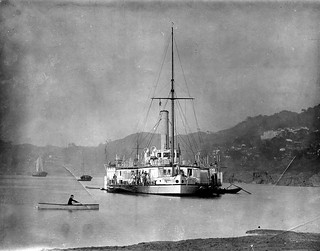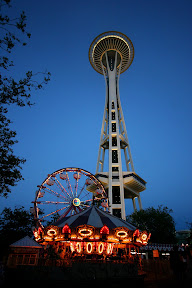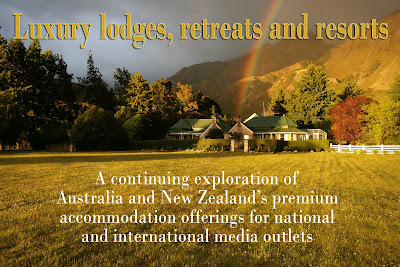By Roderick EimeTamaki-Makau-Rau - ‘the maiden with a hundred lovers’ – may not sound like the most flattering of descriptions, but the Maori have a definite fondness for the region that provides a bounty of seafood in a setting of lush, rolling hills and a temperate climate.
Auckland was named in 1840 by the first Governor, Capt William Hobson after his commanding officer, Lord Auckland. It is the world’s largest Polynesian city with around 63 per cent of residents from European descent. 11 per cent are Maori, 13 per cent Pacific Islander and the growing Asian population is around 12 per cent.
The bustling city may have lost its mantle of political capital to Wellington in 1865, but maintains its rightful place as the economic hub of the country. As such, the crème of cosmopolitan life and all its trappings can be found in this friendly and dynamic metropolis.
Activities:
Adrenalin junkies love the Skyjump. Almost 200 metres up the Auckland Sky Tower, thrillseekers are attached to a cable and lowered, no dropped, at 85 km/h to the ground below. Not for the faint-hearted. $195. www.skyjump.co.nz
At 328 metres, Sky Tower is the largest tower in the Southern Hemisphere (sorry Sydney). $25 will get you admission to the observation deck and the lift ride takes just 40 seconds. On a clear day your can see over 80 kilometres in all directions. There is also the heart-stopping Vertigo Climb, where you can climb all the way to the top – 300 metres up. At time of writing, the climb was closed for upgrading, so check first. www.skycityauckland.co.nz
Go canyoning in the Waitakere Ranges just forty minutes from the city. This activity includes abseiling, swimming and rock slides for the outdoor adventurer and an opportunity to explore the historic logging region from a different perspective. $135. www.awoladventures.co.nz
An easy walk from any point in the CBD is the historic Victoria Park Market. Built in 1905 as a rubbish incinerator, this heritage-listed site is the oldest example of Victorian industrial building left anywhere in New Zealand. The rough bricks and wobbly cobbles are part of the experience as you stroll around 100 shops and stalls packed with crafts, gourmet food, sportswear and brand name items on clearance. www.victoria-park-market.co.nz
Shopping:
Retail commandos will quickly find themselves at home in the well stocked malls and shopping centres. If you are looking for something special to take home, look out for traditional New Zealand souvenirs like superb Maori carvings in wood, bone and pounamu (greenstone or jade). You can also find jewellery and ornaments made from the iridescent paua shell (abalone).
New Zealand potters are world famous and many fine artisans also work in stone, wood, glass and metals. The vast wool industry provides wonderful hand-knitted sweaters, beautiful wall hangings, homespun yarns and top-quality sheepskins. Australia’s feral possums have been put to good use and magnificent scarves, beanies and cardigans are made from their super warm fur.
Volcanic mud products like soap, cremes and scrubs from Rotorua make a truly unique gift and deliver excellent results despite the unusual perfume!
Alongside top international boutique stores in the city, look for New Zealand's own award-winning fashion labels, including Zambesi, NomD, Karen Walker and World.
Auckland Museum is one of the new genre of highly visual, interactive museums demanded. Packed with cultural, natural and historical displays, there are always special exhibitions. Three live Maori cultural performances take place daily including the celebrated and truly spine-tingling haka. You can catch the Charles Darwin “Revolutionary” exhibition until January 13 for just $15. www.aucklandmuseum.com
The glorious Hauraki Gulf to the east of the city is one of the most picturesque waterways anywhere in the world and is renowned as the 1995 venue for the America’s Cup. There is an abundance of pleasure boat and day-trip possibilities available, so ask your concierge or tour desk to help you choose from the many options available. Here are some ideas:
Bird lovers will delight at the Tiritiri Matangi Open Sanctuary where you will see some of the rarest birds in the world. www.tiritirimatangi.org.nz
Kawau Island is fifteen minutes by ferry and a delightful location for a picnic or peaceful stroll. The magnificent manor was built in 1845 for the manager of the now-derelict copper mine established nearby.
Great Barrier Island contains one of the last stands of kauri timber left in New Zealand. Great for bushwalkers.
Play America’s Cup skipper aboard one of the authentic racing yachts, NZL 40 and NZL 41, available on the harbour. www.explorenz.co.nz
Enjoy wine tasting and beachcombing on Waiheke Island, just 30 minutes by ferry.
Sunbathe and swim at Motuihe Island
Spot common and bottlenose dolphins, Brydes whales and orca from one of the Dolphin Explorer’s daily marine mammal eco-safaris.
Back on land, children will enjoy the acclaimed Auckland Zoo or Kelly Tarlton's Antarctic Encounter and Underwater World at Orakei. A free shuttle pass leaves the city every hour. See one of the few King and Gentoo penguin displays outside of the Antarctic. Adults $28. www.kellytarltons.co.nz
Auckland’s nightlife and dining options are world class with an array of sophisticated entertainment, boutique and club venues.
Your own Stamford Plaza has developed four new restaurants as part of the recent total refurbishment. Choose from:
Kabuki Teppanyaki Restaurant: The spectacular Teppan style combines the very best of New Zealand produce with the plated elegance of international cuisine.
Knights on Albert: Featuring the best breakfast buffet in town, an express lunch buffet and an exclusive a-la-carte evening menu, the new stylish lobby restaurant, Knights, is open from early morning until late in the evening.
Knights Lobby Bar: The new Knights Lobby Bar is a stylish place to meet friends and relax with a drink.
Grasshopper: A Thai Fusion restaurant, Grasshopper is a 200-seat outlet, open seven days a week for lunch and dinner and is under the operation of the owners of “Mai Thai”, generally regarded as Auckland’s best Thai Restaurant.
Otherwise, you may wish to try:
Pasha Restaurant in the Shed on Princes Wharf is the current hot ticket for the ‘in’ set. Styled on the romantic spice traders of Asia, you can nibble on roast cumin and coriander aubergine puree with vegetables and olives ($18) while celebrity spotting over at the bar. www.thenourishgroup.co.nz/pasha
For a special occasion, The Dining Room at Mollies in St Mary’s Bay is an excellent choice. Deliciously quirky, exquisite cuisine is accompanied by live opera and a troupe of delightfully eccentric staff led by owner, Frances Wilson. This multi-award winning restaurant has ambience and style in spades. All inclusive menu is $140pp. www.mollies.co.nz
Concerts:
Major Artists coming to Auckland:
28 November - Lionel Richie live in concert
19 January – The Police live in concert
Arriving in Auckland: (source: www.newzealand.com)
Auckland International Airport is located 20 kilometres south of the city in the suburb of Mangere and is New Zealand’s largest and busiest airport. There are separate terminal buildings for both international flights and domestic flights.
Auckland (AKL) is serviced by Jetstar, Air New Zealand, Qantas, Emirates, Freedom Air and Pacific Blue (Virgin).
The bus costs $15 (adult one way) and takes approximately one hour, while the popular shuttle service costs about $26 for one person and $32 for two. This is a useful alternative to a taxi which costs about $60 but takes only 30 minutes.
www.auckland-airport.co.nz
Travel around Auckland:
The Explorer Bus is an easy, hop on, hop off sightseeing tour with full commentary visiting Auckland's 14 main attractions. $30 all day. www.explorerbus.co.nz
The Link. Auckland’s own commuter bus service covering the city area. $1.50 www.stagecoach.co.nz
Over 20 hire and rental companies service Auckland. Choose from roughies to limo or even motorbikes. Some basic road rules vary in New Zealand, so be sure to brush up on local customs.
Fullers Cruises offer a comprehensive cruise and ferry service covering almost the whole gulf. www.fullers.co.nz
Auckland is fully catered for with taxi, hire car and limousine services and its well-planned and maintained roadways make it simple to find your way around. Founded in 1947, Auckland Co-op Taxis has over 700 vehicles. www.cooptaxi.co.nz
More visitor information:
www.aucklandnz.comAuckland i-SITE Visitor Centre - Princes Wharf
137 Quay Street, Princes Wharf, Auckland
i-SITE New Zealand is situated on Quay Street, Princes Wharf, on the corner of Hobson and Quay Street in downtown Auckland. Tourism Auckland i-SITE Visitor Centres provide expert local knowledge and free, objective advice on travel throughout Auckland and New Zealand.







